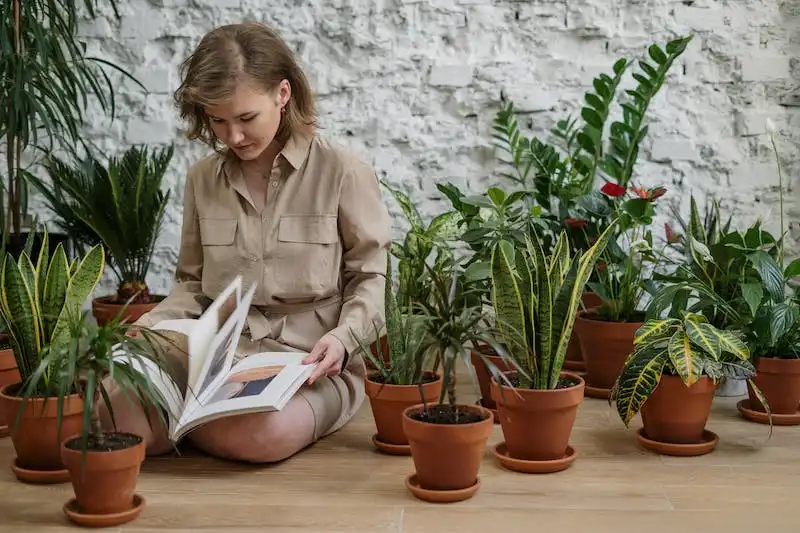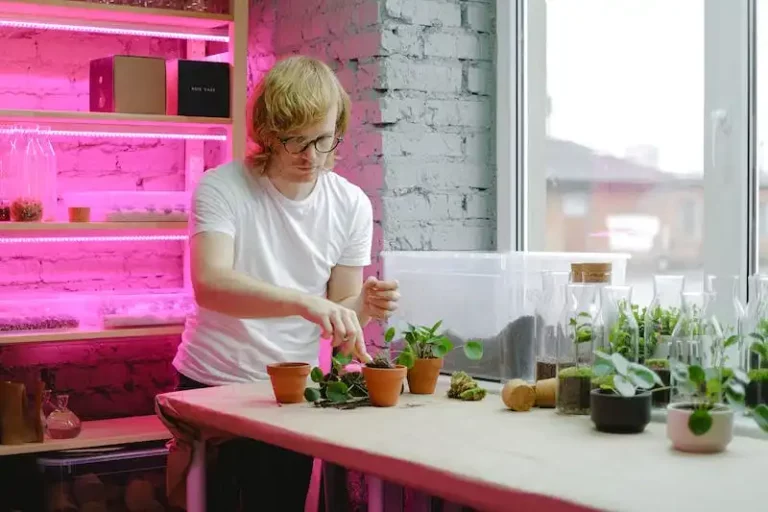Are you tired of battling brambles in your garden? These invasive plants can quickly take over your yard, choking out your desirable plants and causing a headache for any gardener. But don’t despair – there are effective methods for removing and preventing brambles from spreading in your garden.
One of the most common errors that gardeners make when trying to kill brambles is using the wrong herbicide. While there are chemical-based killers available, many of these can harm other plants and cause damage to your yard. Instead of wasting time and money on these ineffective options, it’s best to go for a more targeted approach.
The best way to get rid of brambles is to remove them by the roots. This can be a labor-intensive process, but it’s the most effective way to ensure that they won’t come back. Start by wearing protective clothing, as brambles are known for their thorns. Then, use tools such as a shovel or a hoe to dig up the brambles, making sure to get as much of the root system as possible. If you encounter a particularly stubborn bramble, consider using a homemade herbicide, such as a solution of vinegar and salt, to kill it.
Timing is also important when trying to get rid of brambles. Spring is the best time to tackle this task, as the plants are actively growing and their root systems are more vulnerable. It’s also important to note that brambles are more easily killed before they have a chance to produce fruit. So be sure to start the removal process early in the season to stop the brambles in their tracks.
If you’re looking for a more long-term solution, you can replant the area with other plants that will help prevent further invasion. Consider planting shrubs or groundcovers that have a dense root system, as these can help keep the brambles at bay. Joining a gardening group or community can also be a helpful way to gain experience and get advice from experienced gardeners who have dealt with brambles before. They can guide you on the best methods for removing brambles and offer useful tips for keeping your garden bramble-free.
In conclusion, getting rid of brambles in your garden can be a daunting task, but with the right plan and tools, it’s possible to reclaim your yard. Start by removing the brambles by their roots, using targeted herbicides if needed. Timing your removal in the spring when the plants are actively growing is key, and replanting the area with other plants can help prevent future invasions. By following these tips and seeking guidance from experienced gardeners, you can successfully remove and keep brambles at bay in your garden.
Brambles 101 – How to Get Rid Of Brambles for Good
If you have brambles in your garden, you know they can be a real nuisance. These tough and thorny bushes, also known as brushwood, can quickly take over your landscape if left unchecked. But don’t worry, we have the tools and techniques you need to effectively get rid of brambles for good.
Before we get into the step-by-step process of bramble removal, it’s important to understand the nature of these troublesome plants. Brambles are aggressive and resilient, capable of regrowing from the smallest piece of their root or stump. This means that simply cutting down the brambles above ground won’t be enough to eliminate them.
When it comes to bramble removal, there are two main methods you can choose from: chemical and tactical. The choice between the two depends on your personal preferences and the specific circumstances of your garden.
If you decide to go the chemical route, you may consider using glyphosate-based killers like SBK. These powerful herbicides can effectively kill brambles, but they do have their downsides. Glyphosate is a non-selective herbicide, meaning it will kill any plant it comes into contact with. This can be a problem if you have other desirable plants in your garden. Additionally, chemicals can take some time to work, so be prepared to wait before you see results.
On the other hand, tactical bramble removal involves more physical work. The best way to start is by using tools like loppers, a mattock, and a shovel. Loppers are great for cutting through thick bramble branches, while a mattock can help you dig up the root system. And don’t forget about the thorns – make sure to wear protective clothing and gloves.
Once you have your tools ready, follow these steps for effective bramble removal:
- Start by cutting down the brambles as close to the ground as possible using loppers. This will make the removal process easier.
- Use a mattock or shovel to dig around the base of the bramble bush and loosen the soil.
- Gently lift the bramble bush out of the ground, making sure to remove as much of the root system as possible.
- If needed, dig deeper to get to the roots. Brambles are known for their extensive root systems, so be thorough in your removal.
- Dispose of the bramble waste properly. You can either put it in your organic waste bin or consider composting it if you have the means.
- Repeat the process for any remaining brambles in your garden.
In conclusion, getting rid of brambles for good will take some time and effort, but it is definitely possible. Whether you choose a chemical or tactical approach, make sure to follow the proper steps and take care of any remaining roots to prevent the brambles from regrowing. With a bit of patience and perseverance, you can reclaim your garden from these prickly pests.
If you have any further questions or need additional guidance on bramble removal, feel free to leave a comment below. Our team is here to help you achieve a bramble-free garden.
Lets Start with the Tools needed for effective removal of brambles
If you live in California or anywhere else where brambles are easily found, you know the pain and frustration they can cause. These pesky invasive weeds can quickly invade your yard, taking over trees, bushes, and other plants in their path. But fear not! With the right tools and a little effort, you can effectively get rid of brambles and reclaim your garden.
One of the first steps in the bramble removal process is having the right tools on hand. Here are a few tools that will come in handy:
- Loppers: These long-handled pruners are perfect for cutting back bramble growth. Use them to trim away any overhanging branches and make it easier to access the bramble-infested areas.
- Shovel: A sturdy shovel is essential for digging up bramble roots. Use it to loosen the soil around the roots and then carefully lift out the bramble plant.
- Mattock: This tool is a combination of an ax and an adze, making it perfect for digging up stubborn bramble roots. The pointed end can be used to break up the soil, while the flat end can be used for chopping and digging.
Once you have your tools ready, it’s time to start the removal process. Here’s a step-by-step guide on how to effectively remove brambles:
- Step 1: Identify the bramble invasion: Take a walk around your garden and identify all the areas where brambles have taken root. Pay close attention to any bramble growth around trees and bushes.
- Step 2: Cut back the bramble: Using your loppers, trim away any overhanging branches and clear a path to the bramble-infested areas. This will make it easier to access the roots.
- Step 3: Dig up the roots: With your shovel or mattock, dig around the base of the bramble plant and loosen the soil. Once the soil is loosened, carefully lift out the bramble plant, making sure to remove as much of the root system as possible.
- Step 4: Remove the stump: After removing the above-ground portion of the bramble plant, dig around the stump and use your mattock or shovel to remove as much of the root system as possible.
- Step 5: Dispose of the bramble: Bag up the bramble plants and roots and dispose of them properly. Avoid composting them, as bramble roots can easily re-establish themselves in your compost pile.
Remember, brambles can be stubborn and may require multiple removal attempts to completely get rid of them. Timing is also important, as brambles are most vulnerable in late winter and early spring when they’re actively growing.
If you’re having trouble removing brambles on your own, consider using herbicides. Glyphosate-based herbicides work well on brambles and can effectively kill the plants down to the root. Just be sure to read and follow the label instructions to avoid any error.
Another useful herbicide for bramble removal is triclopyr, which is specifically designed to target and kill woody plants like brambles. Again, make sure to read and follow the label instructions for safe and effective application.
By using the right tools and following the proper techniques, you can successfully remove brambles from your garden and keep them from coming back. Don’t let brambles take over your yard – take action today and reclaim your garden!
How to get rid of brambles the organic method without using a chemical weed killer
If you have brambles taking over your gardens, it’s important to start tackling the problem as soon as possible. Waiting too long or ignoring the issue can result in brambles spreading and becoming even more difficult to get rid of. Timing is key when it comes to dealing with brambles, so make sure to start early!
One of the first steps in getting rid of brambles is to prevent them from regrowing. This can be done by removing any existing bramble bushes and their roots. Use a lopper or shovel to cut or dig out the bramble plants. Make sure to treat the area with a systemic weed killer to prevent the brambles from returning.
However, if you prefer a more natural approach, there are several tactics you can try. One method is to smother the brambles by covering them with a thick layer of mulch or a weed control mat. This will block sunlight and prevent the bramble growth. Another option is to manually remove the brambles by carefully digging them up with a mattock or similar tool, making sure to remove as much of the root system as possible.
A homemade bramble killer can be created by mixing vinegar and boiling water and pouring the mixture directly on the bramble plants. This will kill the brambles without the need for chemical treatments. However, keep in mind that this method may not be as effective as using a commercial weed killer like Roundup.
In addition to these methods, it’s always a good idea to keep an eye out for any signs of new bramble growth and take immediate action to stop it. Regularly inspect your gardens and remove any new bramble plants as soon as they appear. By being proactive, you can prevent a full-blown bramble invasion.
Overall, getting rid of brambles can be a challenging task that takes time and effort. It’s important to have patience and be persistent in your efforts. By using organic methods and without relying on chemical weed killers, you can effectively eliminate brambles and keep your gardens bramble-free.
Using Systemic Weed Killer
If you are dealing with a stubborn bramble invasion in your garden, using a systemic weed killer may be the most effective method to get rid of them. These types of weed killers are designed to travel through the entire plant, including the roots, ensuring they are eliminated completely. Here is a step-by-step guide on how to use a systemic weed killer to tackle the brambles in your garden:
- Start by pruning: Before you begin with the weed killer, it’s always a good idea to start by pruning the brambles. Use pruning shears to remove any excess growth, making it easier for the weed killer to penetrate the plants.
- Choose the right weed killer: Look for a systemic weed killer that contains triclopyr. This ingredient is known for effectively killing brambles and other tough brush plants.
- Read the instructions: Before using the weed killer, carefully read the instructions and make sure you understand how to apply it correctly. This will help avoid any errors and ensure the process goes smoothly.
- Protect yourself: Put on protective clothing, including gloves and goggles, to prevent any contact with the weed killer. Safety should always be a top priority.
- Apply the weed killer: Use a sprayer or a brush to apply the weed killer directly onto the brambles. Make sure to cover all the leaves and stems thoroughly.
- Wait and observe: After applying the weed killer, give it some time to work. It may take a few days to see the effects, but within a week, the brambles should start to wither and die.
- Return and remove: Once the brambles are dead, return to the area and remove them. Use pruning shears or a mattock to carefully dig out the roots. Be sure to dispose of the bramble waste properly, as it can take a long time to decompose.
- Be prepared for retaliation: Brambles are known for their resilience, so be prepared for some retaliatory growth. Keep an eye on the area and be ready to apply more weed killer if necessary.
In conclusion, using a systemic weed killer is the most effective method to stop bramble invasions in your garden. While other methods like pruning and manual removal can be useful, they may not fully eliminate the problem. By following the steps outlined in this guide, you can successfully get rid of brambles and reclaim your garden landscape.




